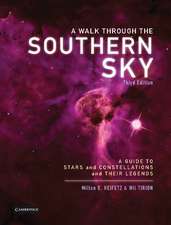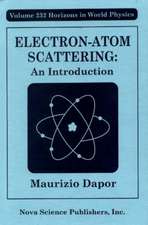New Uses of Ion Accelerators
Editat de James Ziegleren Limba Engleză Paperback – 19 mar 2012
Preț: 403.91 lei
Nou
Puncte Express: 606
Preț estimativ în valută:
77.29€ • 80.50$ • 64.43£
77.29€ • 80.50$ • 64.43£
Carte tipărită la comandă
Livrare economică 28 martie-11 aprilie
Preluare comenzi: 021 569.72.76
Specificații
ISBN-13: 9781468421712
ISBN-10: 1468421719
Pagini: 500
Ilustrații: XIV, 482 p.
Dimensiuni: 170 x 244 x 26 mm
Greutate: 0.79 kg
Ediția:Softcover reprint of the original 1st ed. 1975
Editura: Springer Us
Colecția Springer
Locul publicării:New York, NY, United States
ISBN-10: 1468421719
Pagini: 500
Ilustrații: XIV, 482 p.
Dimensiuni: 170 x 244 x 26 mm
Greutate: 0.79 kg
Ediția:Softcover reprint of the original 1st ed. 1975
Editura: Springer Us
Colecția Springer
Locul publicării:New York, NY, United States
Public țintă
ResearchCuprins
1. Ion-Excited X-Ray Analysis of Environmental Samples.- I. Introduction.- II. General Considerations for Ion Beam Analysis of Environmental Samples.- III. Formalism and Optimization.- IV. The UCD/ARB Aerosol Analysis System.- V. Ion-Excited X-Ray Analysis Programs.- 2: Material Analysis by Nuclear Backscattering.- A. Introduction.- B. Applications.- I. Introduction.- II. Ion Implantation.- III. Thin Films: Growth and Deposition.- IV. Thin Film Reactions: Interdiffusion and Compound Formation.- V. Bulk Effects: Composition, Diffusion and Solubility.- VI. Concluding Remarks.- Acknowledgments.- References.- Formalism.- 1. Three Basic Concepts in Backscattering.- 2. Depth Scale in Backscattering Analysis [S].- 3. Height of an Energy Spectrum.- 4. Applications of Backscattering from Elemental Targets.- 5. Application of Backscattering to Compound Targets.- 3: Material Analysis by Means of Nuclear Reactions.- Charged Particle Activation Analysis.- Charged Particle Activation Analysis — Examples.- Prompt Radiation Analysis.- Nonresonant Nuclear Reactions — Gamma Rays Observed.- Nonresonant Nuclear Reactions — Nuclear Particles Observed.- Resonant Nuclear Reactions.- Summary.- Acknowledgment.- References.- 4: Lattice Location of Impurities in Metals and Semiconductors.- I. Introduction.- II. Impurity Detection.- III. The Channeling Technique.- IV. Lattice Location Analysis.- V. Examples.- VI. Summary of the Literature on Channeling Lattice Location Data.- VII. Limitations.- VIII. Conclusions.- References.- 5: Ion Implantation in Metals.- Historical Perspective.- Friction and Wear.- Corrosion.- Ion Backscattering.- Titanium and Stainless Steel.- Zirconium.- Aluminum.- Copper.- Aqueous Corrosion.- Practical Applications in Corrosion.- Electrochemistry and Catalysis.-Implantation Metallurgy.- Equipment for the Ion Implantation of Metals.- Conclusions.- References.- 6: Ion Implantation in Superconductors.- Definition of the Superconducting Parameters.- Influence of Radiation Damage on the Superconducting Properties.- Influence of Implanted Ions on the Superconducting Transition Temperature.- Application to Superconducting Devices.- Conclusions.- References.- 7: Ion-Induced X-Rays from Gas Collisions.- 1. Introduction.- 2. Collision Models.- 3. Measurements of Inner-Shell Excitations.- 4. Discussion of Typical Data.- 5. Summary.- References.- 8: Ion-Induced X-Rays in Solids.- 1. Introduction.- 2. Accelerators and Target Chambers.- 3. The Detection and Analysis of X-Rays.- 4. The Use of Protons and Helium Ions to Generate X-Rays from Solid Targets.- 5. The Use of Heavy Ions to Generate X-Rays from Solid Targets.- 6. Conclusions.- References.- Author Index.















